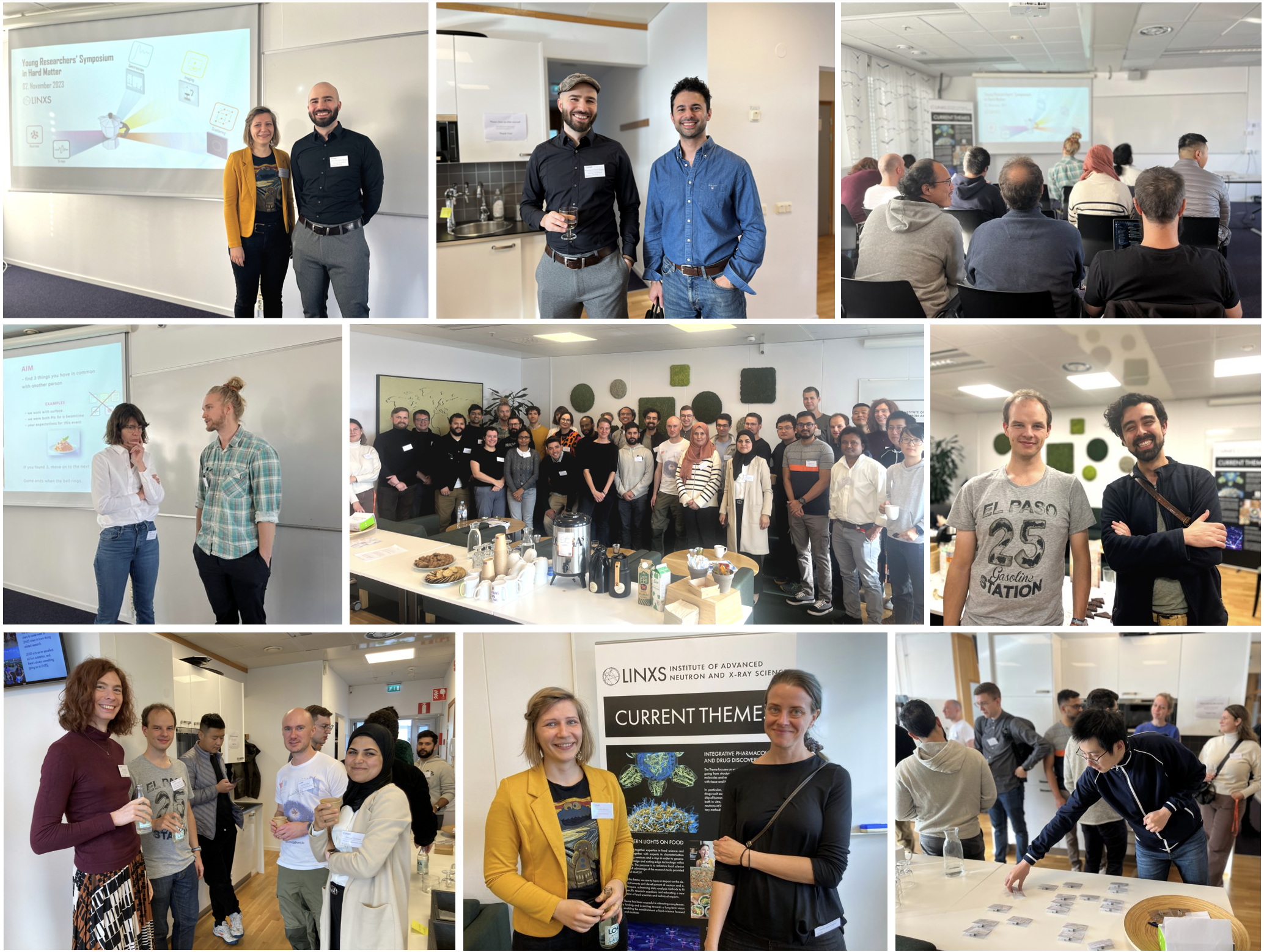Symposium on Hard Matter builds community, networks and new ideas
The Young Researchers' Symposium on X-ray and Neutron Science in Hard Matter, organised in early November, aimed to provide an inclusive and diverse environment to enable networking, discussions and new collaborations among PhDs and postdoctoral researchers.
The LINXS organisers, Sandra Benter, PhD Student at Synchrotron Radiation Research, Lund University, Konstantin Victor Werner, postdoc, Materials and Surface Engineering, DTU, and Annika Stellhorn, scientist at the ESS, are very happy with the outcome. They all agree that events that encourage networking are key to support the next generation of researchers.
From the top: Sandra Benter, Annika Stellhorn and Konstantin Victor Werner. They organised the symposium on Hard Matter.
– Some of the early-stage researchers will be the PIs of the future and it is certainly not a bad idea to have a chance to build your own network and gain independence, says Konstantin Victor Werner.
– Several participants specifically mentioned that they had missed such kind of an event, where they could interact freely with other early-stage scientists. I also noticed everyone was very eager to talk to new people, which is very positive, he says.
Sandra Benter and Annika Stellhorn agree:
– Yes, people seemed quite grateful that there is an event that is specifically targeted towards PhD-students, postdocs and young researchers, which is trying to create bridges between different research backgrounds. There seems to be definite interest in continuing these events, says Sandra Benter.
– Especially for X-ray and neutron studies it is useful to have collaborations with the international community - to the facilities itself, but also to research groups with expertise and willingness to share knowledge. In this kind of event, young researchers from different fields can learn from each other to create a cooperative future scientific expertise, says Annika Stellhorn.
First in a series of events
The symposium was the first in a series which will feature presentations on a wide range of topics such as crystallography, material science, and condensed matter physics, with a focus on the application of different X-ray and neutron techniques.
Sandra, Annika and Konstantin have many ideas for how to develop future events. One example is to contact early career researchers from other institutions for organising joint events – as a way to widen the interest. The group is also discussing how they can create connections between theoreticians and experimentalists, and between industry and academia, respectively. Other ideas focus on how to expand the current format into a two-day event including a poster session, motivating a broader and more international community to join.
They also see different options for how LINXS can support the expansion of the Young Researchers’ Initiatives. One idea is that LINXS could finance travels for international researchers in order to attract a large audience, especially since many X-ray and neutron facility-users typically come from places outside Sweden and Denmark.
Important to make LINXS more visible
Sandra, Annika and Konstantin also highlight the need to make LINXS more visible in different areas to attract more people to attend.
– There is definitely space for improving the visibility of LINXS and its offers. Having events like the Young Researcher Symposia can definitely help increasing the visibility and peoples’ awareness of the opportunities offered by LINXS. One of the participants mentioned that he would have liked if there was a proposal writing session and I think this could be very beneficial for early-stage researchers, says Konstantin Victor Werner.
Annika Stellhorn adds:
– The focus of LINXS in aiding young researchers in their career and their connections is exemplary and should be broadened to include other research facilities within Sweden and abroad! Reaching out to groups and organisations with similar interests can help to connect a more diverse community to exchange scientific ideas.
Sandra Benter concludes:
– Yes, LINXS is a great forum with lots of resources regarding networking and education such as on-going events or material on the website. The key is always to make people aware of the possibilities that are out there. Therefore, it would be great, if all these resources would be easily accessible for a wide audience, which we can work on together with LINXS!
Read more about the The Young Researchers' Initiative on Hard Matter
Collage of pictures with participants taken at the Hard Matter YRI symposium at LINXS in November.


